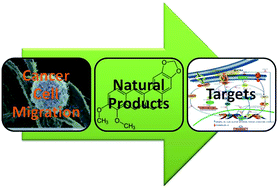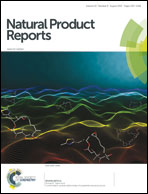Natural products with therapeutic potential in melanoma metastasis
Abstract
Covering: up to 2014
Malignant melanoma is the most aggressive form of skin cancer and accounts for about 3% of all cases of malignant tumour. Its incidence is increasing worldwide and it is becoming resistant to current therapeutic agents. Natural products continue to provide lead cytotoxic compounds for cancer treatment but less attention has been given to antimigratory compounds. This paper systematically and critically surveys all natural products with direct in vitro and in vivo pharmacological effects on migration and/or metastasis of melanoma cells and maps the mechanisms of action for these underexploited properties. As a result, over 30 natural active principles are described acting mainly through their antagonistic effects upon the TNF-α and EP2 receptors or the suppression of several protein kinases involved in metastatic pathways such as RAS, PI3K, ERK and FAK. Also, some were able to reduce the level of mesenchymal biomarkers such as N-cadherin and/or elevate the expression of other molecules such as E-cadherin. Consequently, downstream transcription factors namely NF-kB, AP-1, ATF-2, CREB, and HIF were inactivated leading to diminished production of MMPs, IL-1, IL-6, COX-2, VEGF and GM-CSF. This review also discusses the opportunity of combination therapies based on natural products and approved drugs, such as the combination of EGCG and dacarbazine, or the combination of two natural compounds such as quercetin and sulforaphane.


 Please wait while we load your content...
Please wait while we load your content...